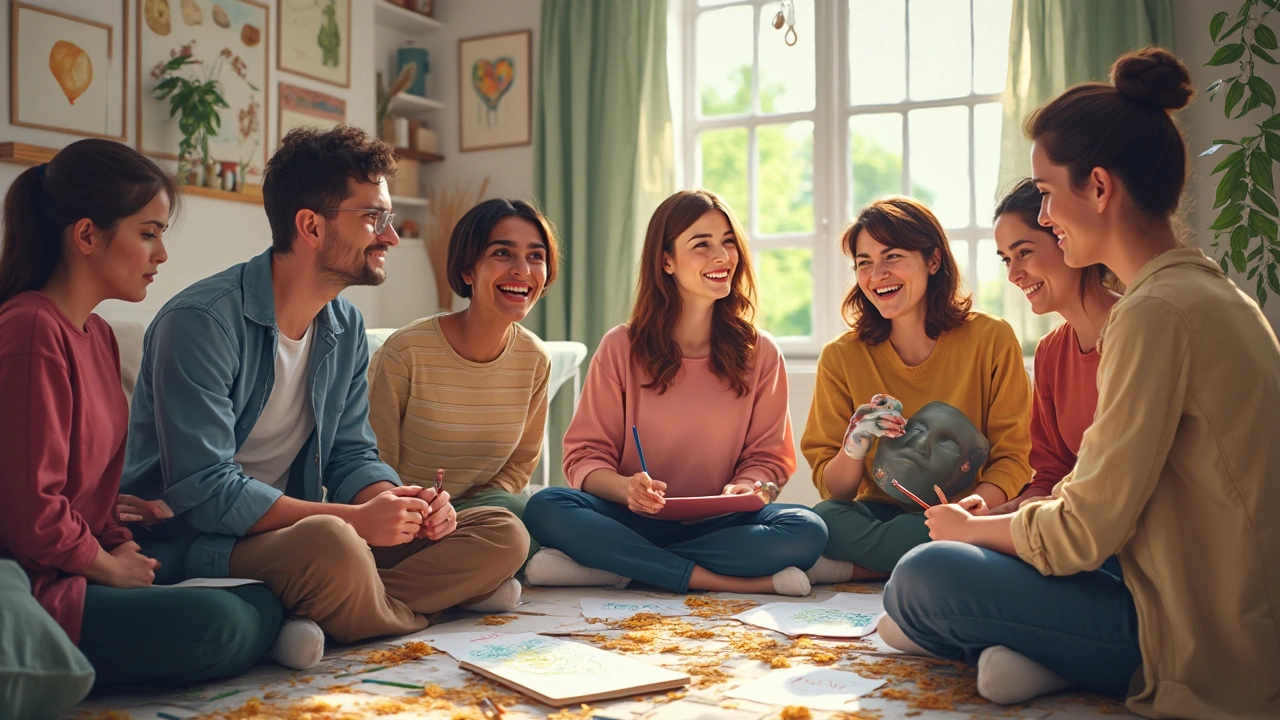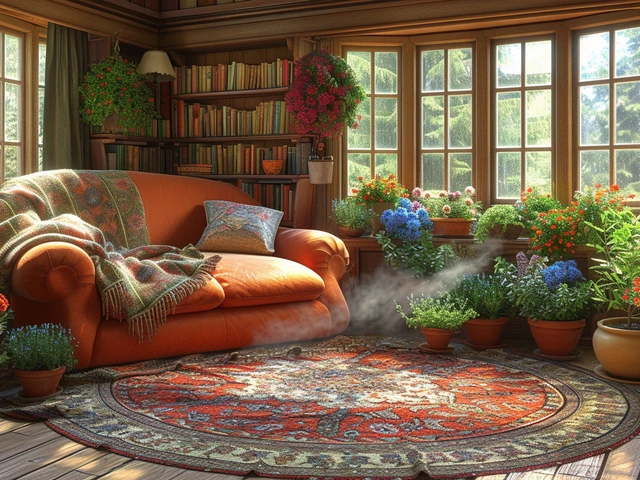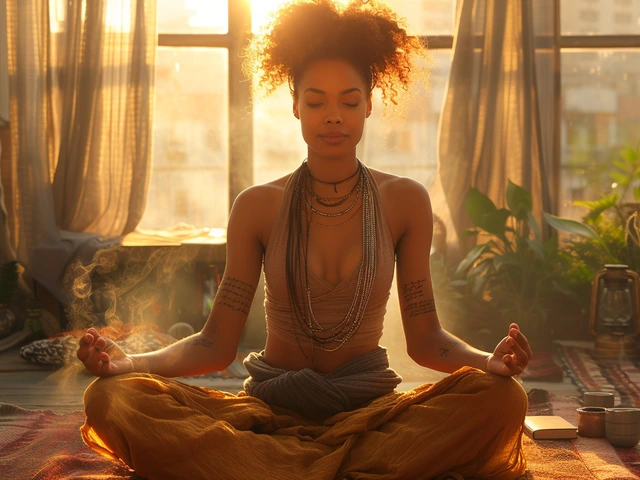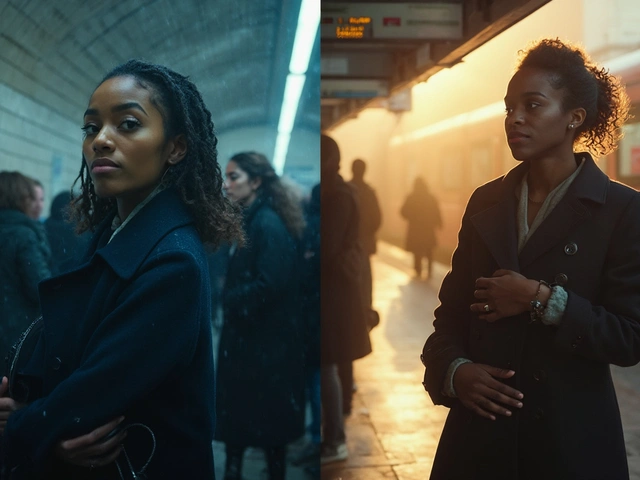Ever tried drawing out your feelings or listened to a song that just gets you? That’s the basic idea behind creative arts therapies — they help people work through tough emotions in ways that talking sometimes can’t. People with anxiety, depression, trauma, or other psychological disorders can use painting, movement, or music as a much-needed release.
What’s surprising is how normal these therapies feel. You don’t have to be a ‘real artist.’ Therapists make sure it’s about the process, not the end result. Even simple doodles or banging on drums can open up conversations, lower stress, and make therapy a lot less intimidating.
If you’re thinking this sounds a little too new-age, check out major hospitals and veteran programs — they actually use these methods especially for people struggling with PTSD or severe anxiety when words don’t come easy. There’s serious research backing this up, and more people are turning to art, music, and movement as legit parts of mental health care.
- What Are Creative Arts Therapies?
- How Creative Arts Help the Brain and Emotions
- Common Psychological Disorders Treated
- What Sessions Actually Look Like
- What the Research Shows
- Real-life Tips for Getting Started
What Are Creative Arts Therapies?
Creative arts therapies turn art, music, movement, drama, or even poetry into tools for mental health. These approaches are run by licensed professionals who guide people to use creative activities as a way to express, cope, or understand their feelings. They aren't about creating masterpieces; they're about the experience itself and what comes up during the process.
There are four big types you’ll usually hear about:
- Art therapy: Using drawing, painting, or sculpting to talk about feelings or events without needing to explain everything in words.
- Music therapy: Playing instruments, singing, or just listening to tracks together to help manage emotions or improve mood.
- Dance/movement therapy: Moving, stretching, or dancing in a way that helps people notice what their bodies feel and release tension.
- Drama therapy: Using roleplay or storytelling as a safe way to act out situations, and then talk about what it brings up.
All these types focus on the process, not how ‘good’ you are. What’s cool is that creative arts therapies are recognized by health organizations. The American Art Therapy Association says:
"Art therapy is a mental health profession that enriches the lives of individuals, families, and communities through active art-making, creative process, applied psychological theory, and human experience within a psychotherapeutic relationship."
The numbers keep rising, too. According to the National Endowment for the Arts, more than 1,500 U.S. hospitals and clinics offered some form of creative arts therapy in 2023. That’s a serious shift, proving these aren’t just feel-good hobbies—they’re making a difference in clinics, schools, and veterans’ centers.
How Creative Arts Help the Brain and Emotions
Here's where it gets interesting: when you do something creative like painting, singing, or dancing, your brain gets a workout. Creative arts therapies aren't just about having fun or passing time; they actually help move your brain away from "fight or flight" mode and into a calmer, more focused place. When people with psychological disorders like anxiety or depression pick up a brush, strum a guitar, or even mold clay, their brains start releasing feel-good chemicals like dopamine and serotonin.
Scientists chatting about brain scans have noticed that these activities trigger both sides of the brain. That means logical thinking and emotional processing are both firing. For folks dealing with trauma or stress, art and music give them a way to work through feelings that are often too complicated to put into words. Plus, moving your hands or body helps you reconnect with yourself in the here and now, which is a big deal for people stuck in tough memories or anxious thoughts.
Let's look at how creative activities change things inside your head:
- Music therapy can lower your heart rate and relax your muscles. Hospitals use it to ease pain and help with sleep.
- Art therapy helps people process emotions and memories. It can lower cortisol levels (that’s your main stress hormone).
- Dance or movement therapy gets your body involved, which is great for breaking the cycle of panic or numbness.
Check out this snapshot from a real study on art therapy and stress:
| Activity | Change in Cortisol (avg.) |
|---|---|
| 30 mins of art therapy | -25% |
| Listening to music | -18% |
So next time you pick up a paintbrush or tap your toes to a song, remember—a lot is happening in your brain and body. Creative arts therapies let you express what’s stuck inside, helping you handle emotions and even get relief from real physical symptoms.
Common Psychological Disorders Treated
It might surprise you how wide the reach of creative arts therapies is when it comes to mental health. These approaches aren’t just for kids with behavior challenges—they help with all sorts of disorders in adults too. Here are some of the main ones:
- Anxiety Disorders: Art and music therapy help people process racing thoughts and manage panic. Simple activities like drawing or listening to calming music actually slow down the body’s stress response.
- Depression: Making art gives people a way to express feelings they often keep bottled up. A 2023 review in Frontiers in Psychology found that creative arts therapies cut depressive symptoms by up to 38% in adults who stuck with it for at least eight weeks.
- PTSD: Veterans and survivors of trauma often struggle to put feelings into words. By acting out scenarios in drama therapy or creating personal music, they can process trauma in a way that’s less direct and overwhelming. Hospitals like Walter Reed use music therapy regularly for combat trauma.
- Eating Disorders: With eating disorders, body image is central. Through movement in dance therapy or creating self-portraits, people learn to connect with their physical selves in a healthier way.
- Schizophrenia and Psychotic Disorders: Expressing confusing thoughts through art or songwriting gives people an outlet that’s safe and non-judgmental. One UK study found art therapy reduced hospitalization days for patients with schizophrenia by 24% on average.
Here’s a quick look at where creative arts therapies are often used for different issues:
| Disorder | Therapy Types | Typical Goals |
|---|---|---|
| Anxiety | Art, Music | Reduce stress, manage panic |
| Depression | Art, Dance, Drama | Express emotion, boost mood |
| PTSD | Music, Drama | Process trauma safely |
| Eating Disorders | Dance, Art | Body acceptance, emotional awareness |
| Schizophrenia | Art, Music | Communication, reduce symptoms |
As Dr. Girija Kaimal from Drexel University puts it,
"Creative expression lets people work through issues that don't always make sense on paper. For many, it's the bridge to opening up when nothing else works."
If you know someone struggling with these disorders, creative arts therapies offer another tool that feels less clinical and way more personal. And no, you don’t need to know how to paint or play guitar to get the benefits.

What Sessions Actually Look Like
Walking into a creative arts therapy session isn’t as scary as it sounds. Picture a room with soft lighting, shelves with paint, musical instruments, maybe a couple of yoga mats or open space for movement. The vibe is relaxed and judgment-free—no strict rules about how things should look or sound.
Sessions usually last about 45 minutes to an hour and can be one-on-one or in small groups. A creative arts therapists leads the session and helps guide, not dictate, the whole thing. You’re never pushed to share more than you want. Privacy and comfort come first.
Here’s what a typical session might involve:
- Art Therapy: You might be given paint, markers, or clay and a loose prompt, like “show how you feel today.” Sometimes you can just draw or sculpt whatever comes to mind. The therapist might ask a few gentle questions about your work, but there are no “wrong” answers.
- Music Therapy: This isn’t about learning an instrument. You could listen to calming or energizing music, try simple drumming patterns, or even write a short song. You don’t have to sing in tune—just expressing yourself is what matters.
- Drama Therapy: Sometimes you’ll act out a story with others or use roleplay to explore tough situations. This helps with processing feelings that are hard to talk about directly.
- Dance/Movement Therapy: Therapists might guide you through light movements, letting your body “say” what words can’t. No experience needed—if you can tap your foot, you can do it.
Not sure what fits? Therapists mix and match techniques based on what feels right for you. They also teach grounding skills like breathing exercises, so you leave each session feeling safe and steady.
| Type of Therapy | Main Activities | Session Goal |
|---|---|---|
| Art Therapy | Painting, Drawing, Sculpting | Express emotions non-verbally |
| Music Therapy | Listening, Playing, Songwriting | Reduce stress, boost mood |
| Drama Therapy | Roleplay, Storytelling, Improvisation | Practice social skills, process trauma |
| Dance/Movement Therapy | Guided Movement, Free Dance | Release tension, increase body awareness |
One cool thing: everyone starts from a different place. Whether you’re someone who hasn’t drawn since grade school or a person who gets stage fright, creative arts therapies are about finding new ways to heal—not impressing anyone. The pressure’s off. Just show up and see where it leads.
What the Research Shows
There’s plenty of solid science behind creative arts therapies helping with mental health. Some people doubt that drawing or dancing can really change things, but the evidence is actually strong, especially for issues like anxiety, depression, and PTSD.
For example, a recent study in the Journal of the American Art Therapy Association looked at adults with high anxiety and found that just 45 minutes of art-making lowered their stress hormones and even improved their mood. The best part? None of the participants needed to be artists—they just had to get started. Other studies tracked veterans in music therapy and noted reduced symptoms of PTSD and fewer nightmares. That’s not just a fluke—programs for trauma survivors often use drumming circles, songwriting, or painting because they really work.
If you’re more of a numbers person, here’s some data that stands out:
| Therapy Type | Main Benefit | Improvement Rate* |
|---|---|---|
| Art Therapy | Reduced anxiety in adults | 43% lower stress levels |
| Music Therapy | Fewer PTSD nightmares | 25% decrease in sleep disturbances |
| Dance/Movement Therapy | Lowered depression scores in teens | 33% improvement |
*Based on studies in peer-reviewed journals (2022-2024)
One interesting fact: Some hospitals now prescribe creative arts therapies alongside medication or traditional talk therapy. It’s not about replacing anything—it’s about giving people one more way in. For folks who find talking tough, art or music sometimes gets to the heart of things faster and without the pressure of having to find the "right words."
At the end of the day, the science is clear. Whether it’s painting, playing music, or dancing it out, these therapies offer serious relief that research keeps backing up. What matters is not artistic skill, but simply taking the step to try.
Real-life Tips for Getting Started
Getting into creative arts therapies doesn’t mean you need fancy supplies or an expensive class. Most people start with just whatever they have at home—a notebook, colored pencils, maybe a playlist and some headphones. The main thing is experimenting and seeing what feels right. If you’re managing psychological disorders like anxiety or depression, small creative practices can become a big part of feeling better.
First, try not to stress about being ‘talented.’ This is about expression, not perfection. Therapists will tell you the same. Dr. Cathy Malchiodi, one of the leaders in the field, says,
"The best art comes from showing up, not showing off. Start with curiosity."
If you want a bit more structure, look for certified professionals. The American Art Therapy Association or the National Association for Music Therapy websites both have directories. Many therapists offer video calls or online groups. Here’s a simple checklist to help you jump in:
- Pick a medium: Drawing, making collages, drumming, even dancing around your living room all count.
- Set a time: Try to do it at least once or twice a week, even for 10 minutes.
- Keep it private: You don’t have to share your creations unless you want to. This is just for you.
- Notice your mood: Jot down a few notes about how you feel before and after, just like you’d track workouts.
- Ask for help: If you’re feeling stuck or overwhelmed, reach out to a licensed art, music, or dance therapist.
If you’re curious about what others experience, studies published in the Journal of the American Art Therapy Association show more than 70% of participants reported feeling less anxious after just three sessions of art or music therapy. Here’s how the benefits stack up based on recent surveys:
| Therapy Type | Percentage Reporting Improved Mood |
|---|---|
| Art Therapy | 72% |
| Music Therapy | 77% |
| Dance/Movement Therapy | 69% |
Trying creative arts therapies at home can be as simple as having a journal session while listening to music or doodling with some crayons. If you want to go deeper, many therapists offer group sessions where you'll see you’re definitely not alone. It’s less about being an artist and more about finding a new outlet for your feelings—one that actually sticks.





